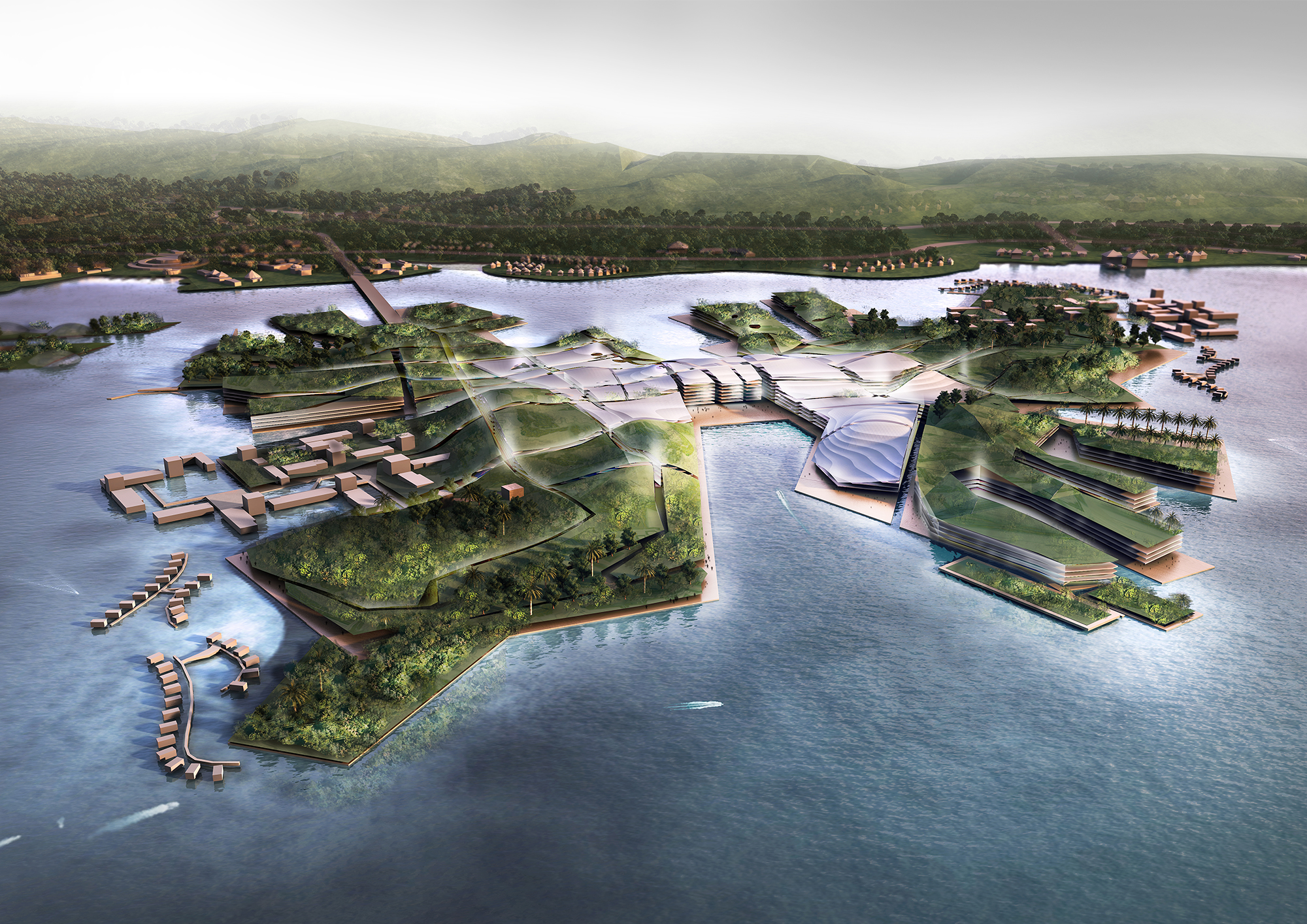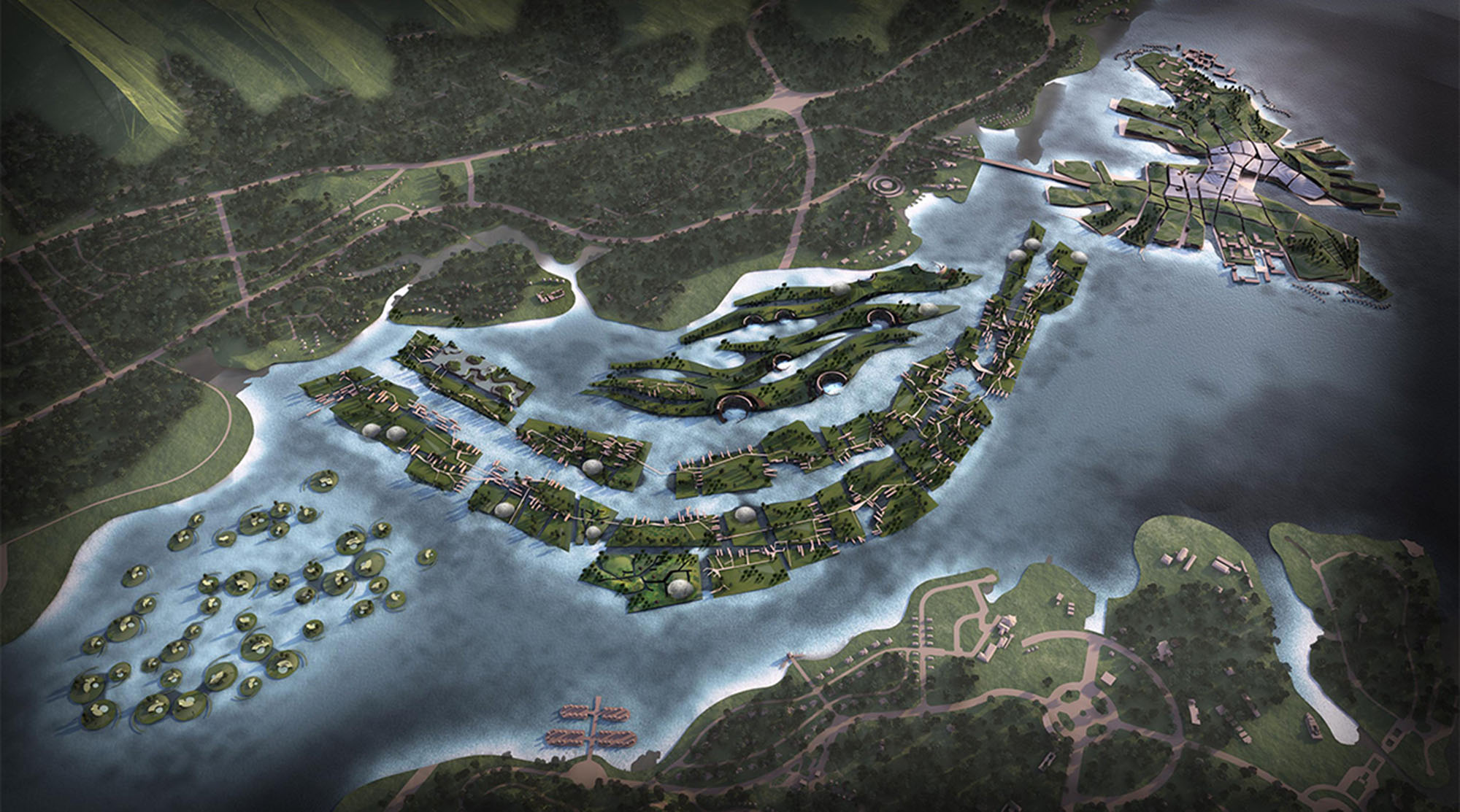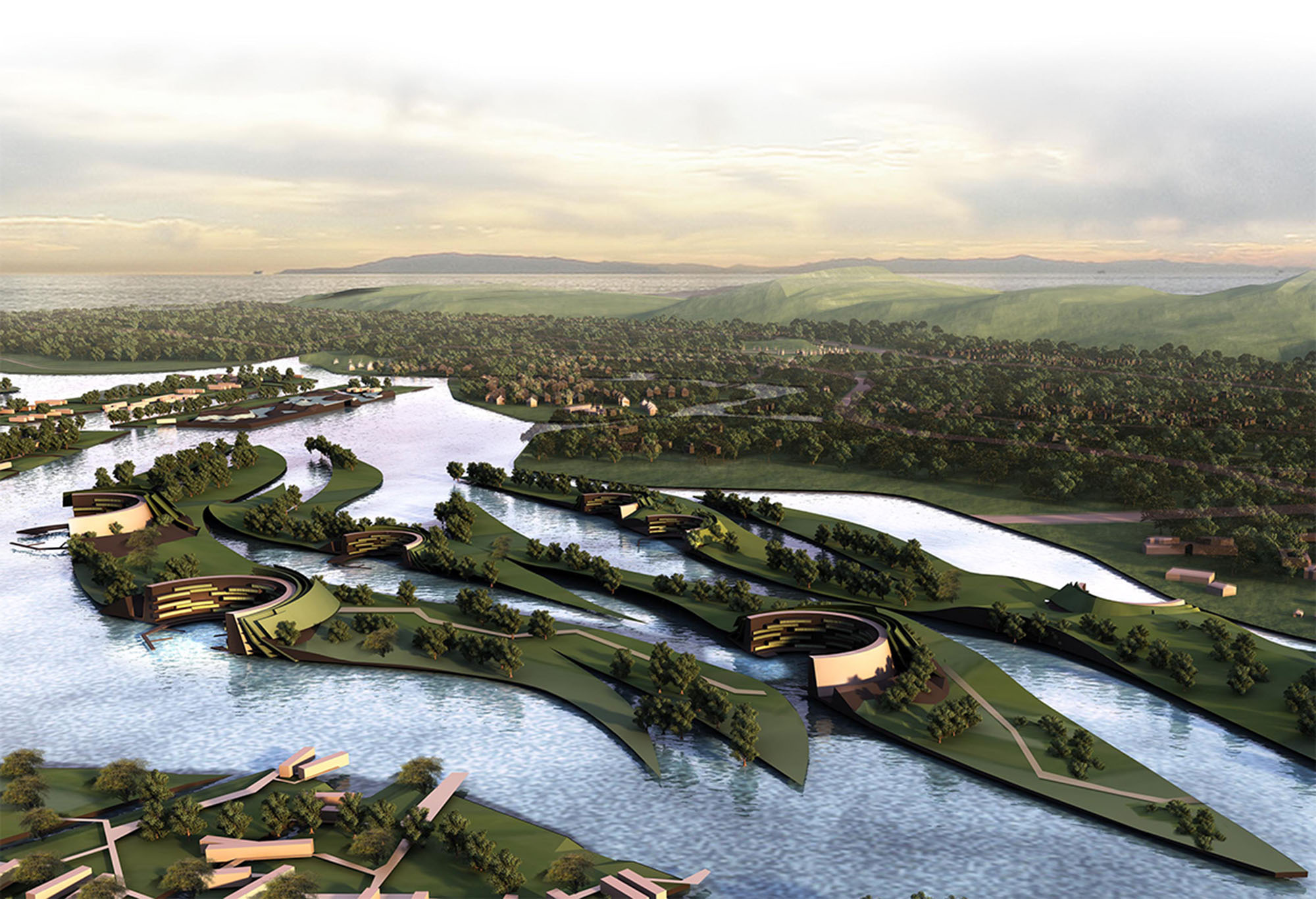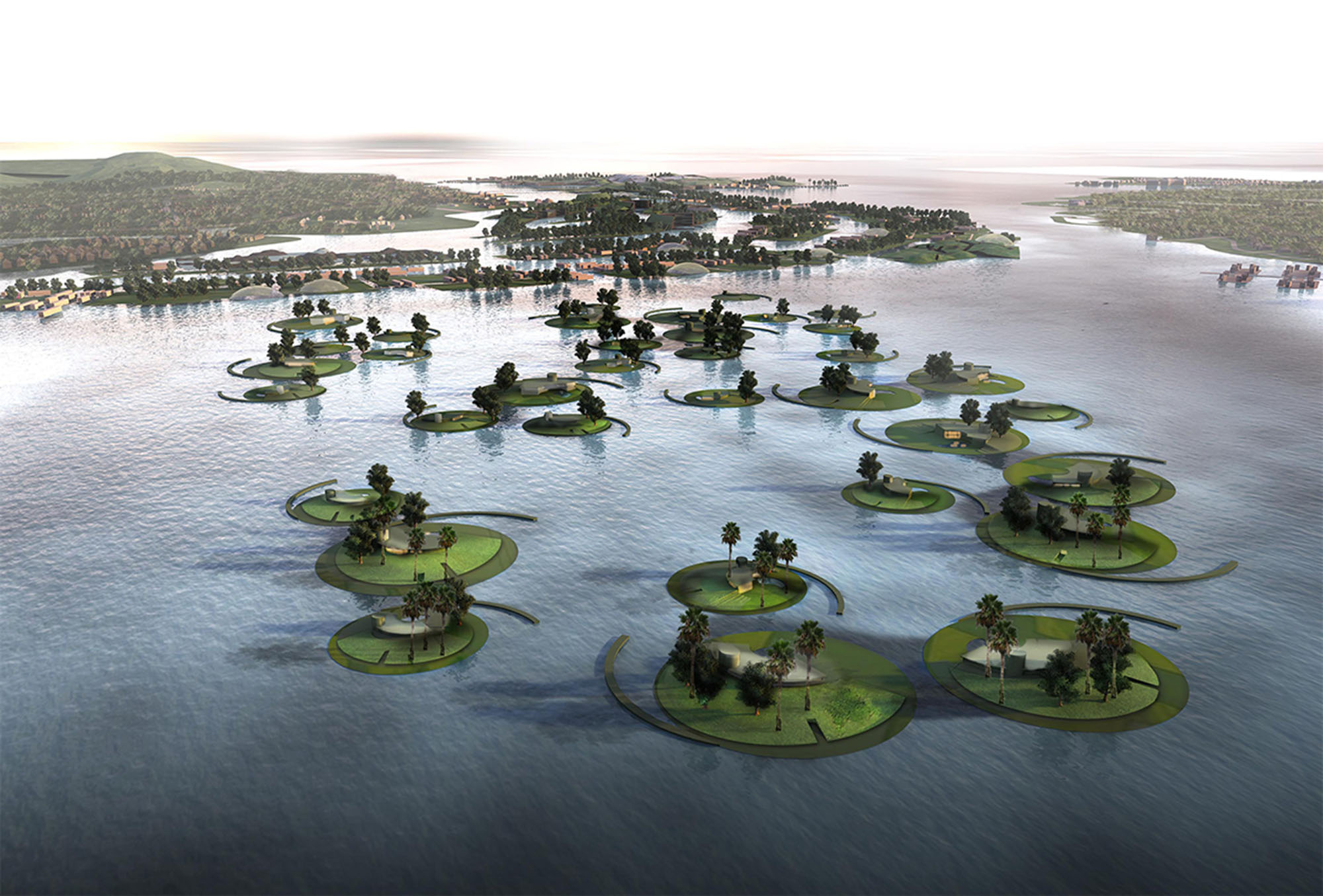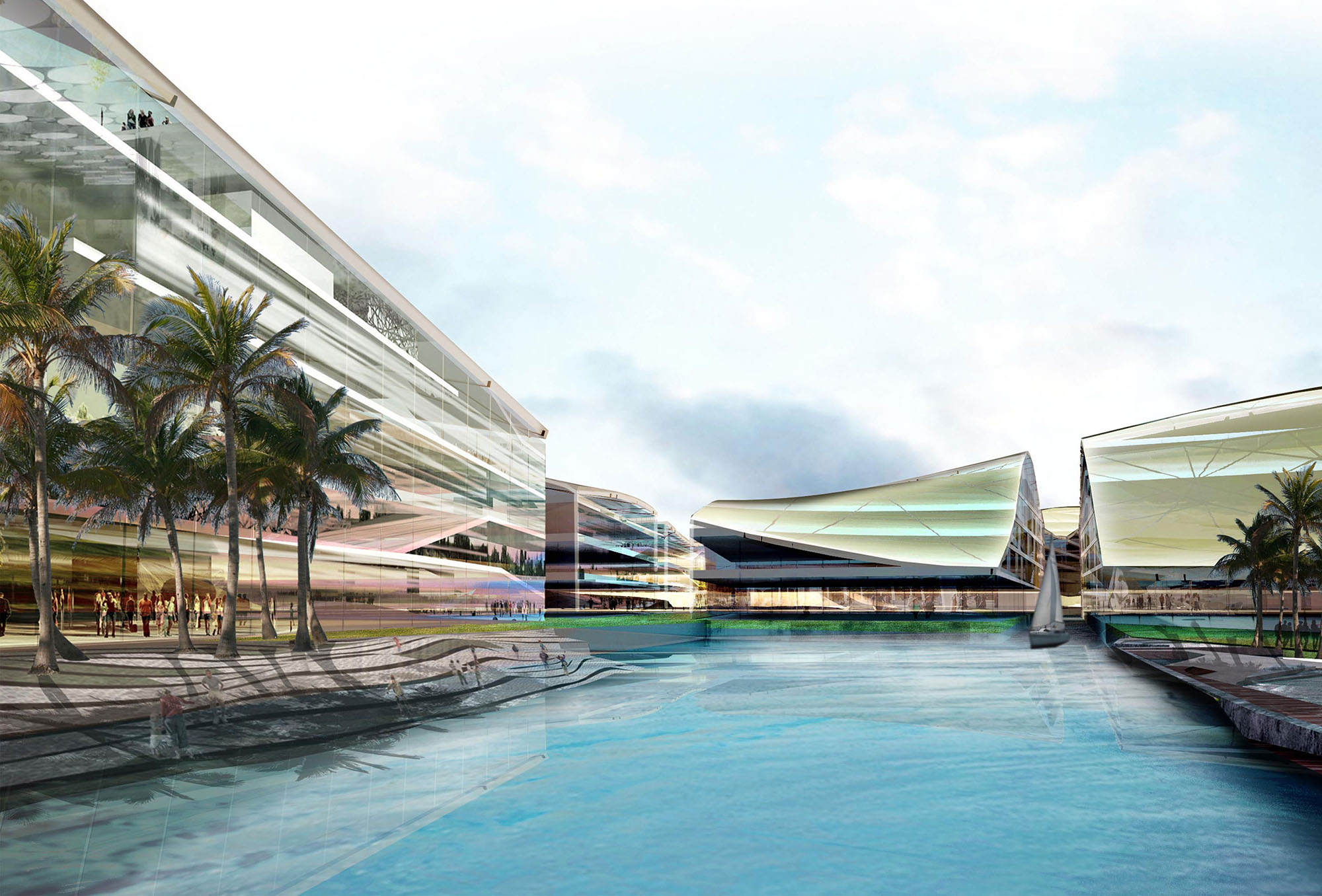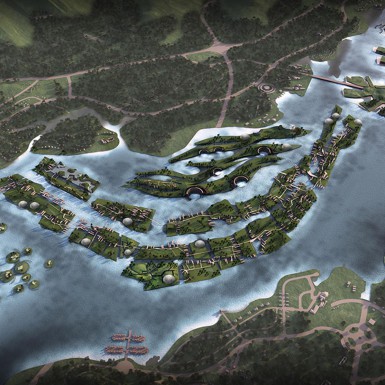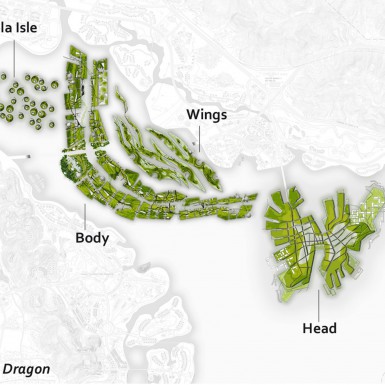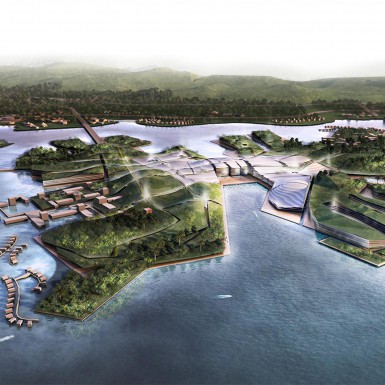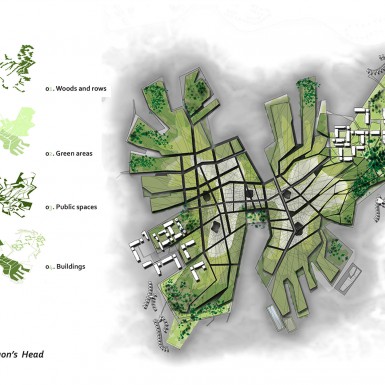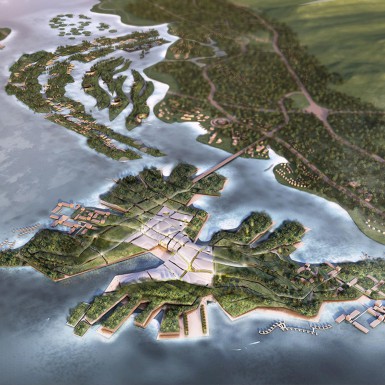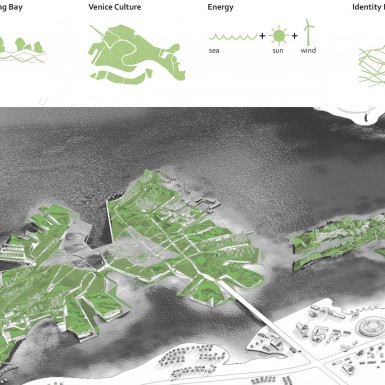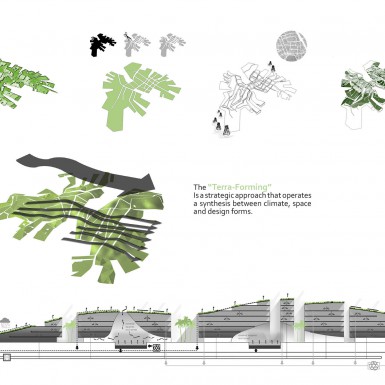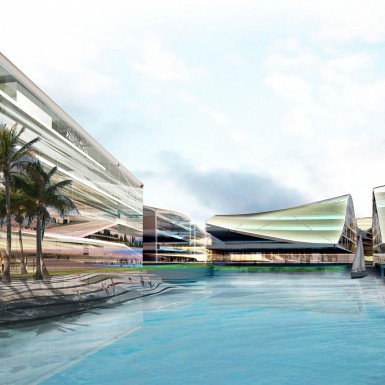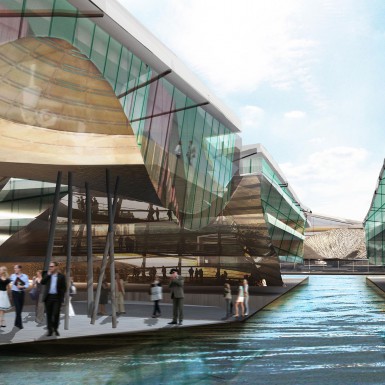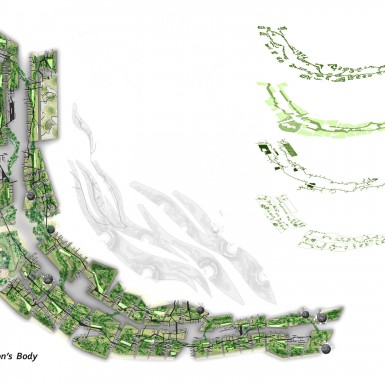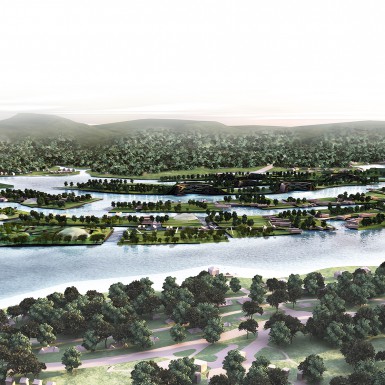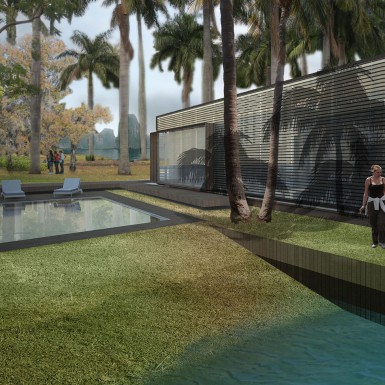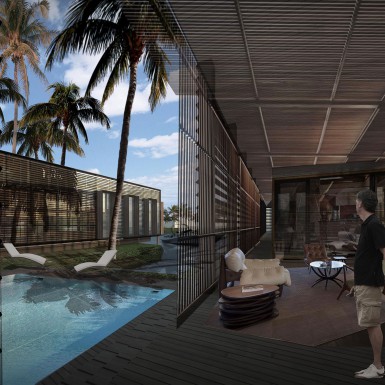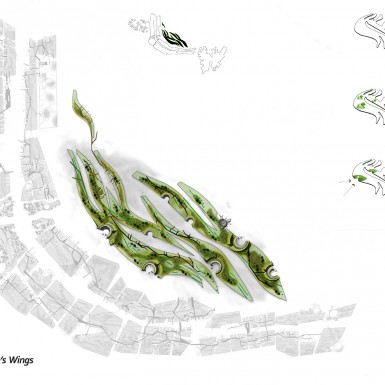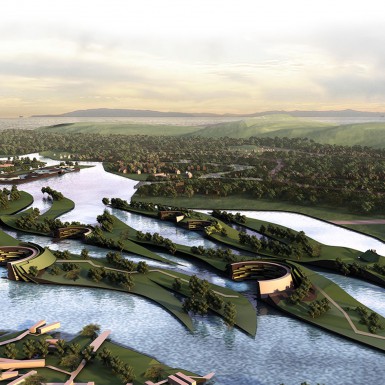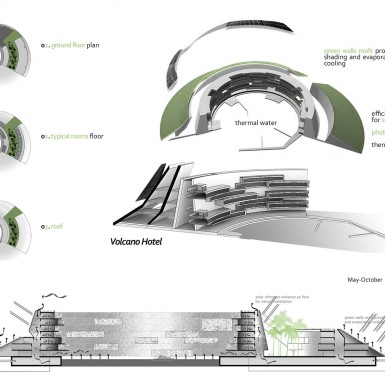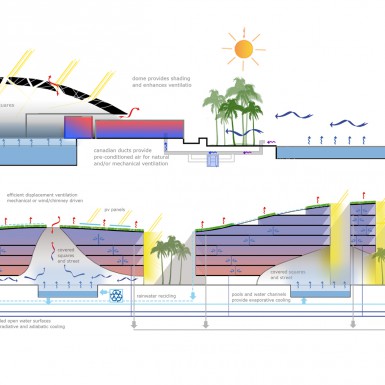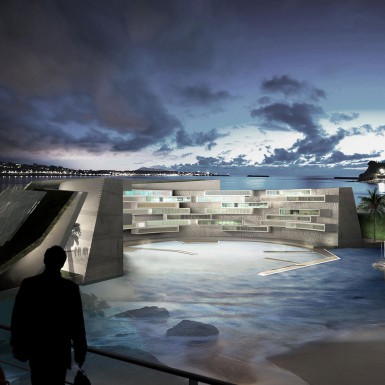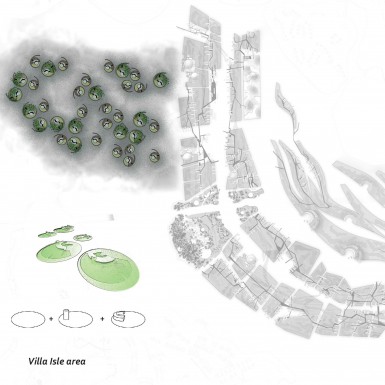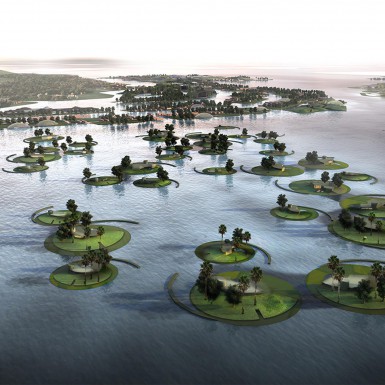Dao Viet Eco-City Halong Bay, Vietnam
The challenges presented by the project are very important not only because of the very large area covered by the project, but also for the extremely “special character” of the area. The thousand islands are UNESCO World Heritage and they have an environmentally critical position, being located in a portion of the lagoon where three rivers converge and dump into the sea. The landscape is the one typical of lagoons and water is dominant. The city has to enhance landscape features, to face with water element and to respect local building traditions. Design follows two design strategic approaches: The Terra-forming and The Typological Transformation. The terraforming is a synthesis between climate, space and imagery of the project. Working with the modelling of the landscape and its characteristic elements, it combines the geometric interpretation of the local- plastic topography and its geomorphological features (karst), making it hybrid with urban structures of Vietnamese cities.
The Typological Transformation is about typical local buildings and responds to the weather characteristics but also with reference to the distributive characteristics suitable to the way of living and social behaviour. By analogy, the city of Venice in Italy has been assumed as the design reference. Venice is an extraordinary example of a city living on water, perfectly functional and of great beauty. The parallel between Dao Viet and Venice is based not only on the similarity of the geographical features and sea & landscape (a lagoon at the delta of rivers), but also on the many cultural similarities. The parallelism between the two cases suggests a very tight relationship between the men made landscape and the waterscape that shapes the systems of the human dwellings and their architectural solutions. What particularly fits in comparison is: the mobility and the extraordinary nature of the experience. The Venetian mobility model, working without automobiles, is a case that is currently still the only one on such a scale of the city: in this sense it is a precursor of future scenarios of alternative urban mobility.
Credits: Design Architects: Tstudio – Guendalina Salimei |Hydraulic design: Majone& Partners S.r.l. |Urban planning: Rosario Pavia, Studio Ferrari |Energy efficiency: Transsolar Klima Engineering | Environmental sustainability: Günter Pfeifer, Malearc |Local partner: Ideas Co. Ltd
Published in: Metamorfosi Quaderni di Architettura n.4, Lettera Ventidue Edizioni, Siracusa 2018, pp. 50-53 – ISSN 1590 -1394 – ISBN 9788862422659 • Nguyen T., Dao Viet, Construction Magazine, 9 2011 pp. 10-13 • Pierotti P., L’eco-city sull’acqua. Diecimila persone sulle isole artificiali, Progetti e concorsi di Edilizia e Territorio, 25: 2012 • Pierotti P., Tstudio realizza eco city in Vietnam, Il Sole 24 ore, 176: 27 Giugno 2012 • Pisani M. (a cura di), Architettura e Paesaggio. Atti del congresso di Genzano, Il Formichiere, Foligno 2015, p. 67-69. ISBN 9788898428519 • Monaco A. (a cura di), Architettura oltre 2015: architettura verde. Progettare la natura, Aracne ed., Ariccia 2016 ISBN: 9788854895553 • Forum Proarch, Città-paesaggio. La sfida di progettare processi generativi di forme in continuo divenire, 2016


